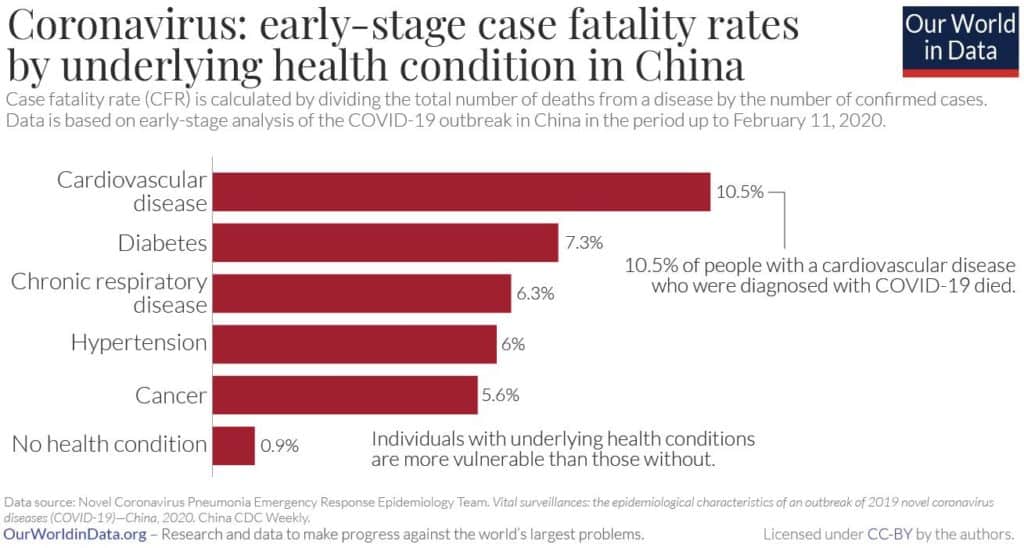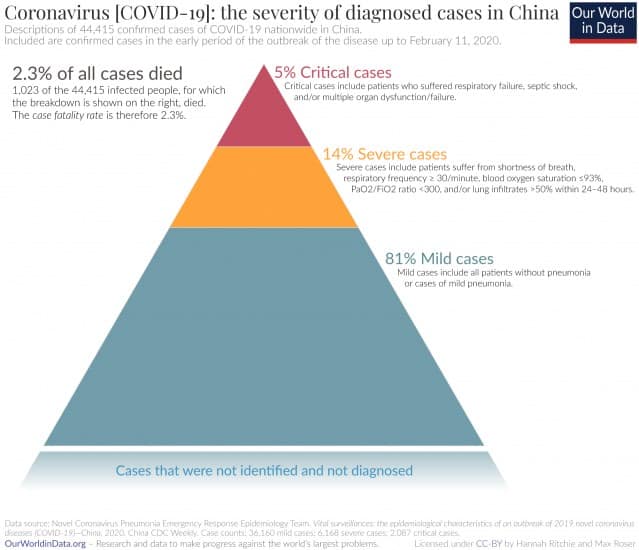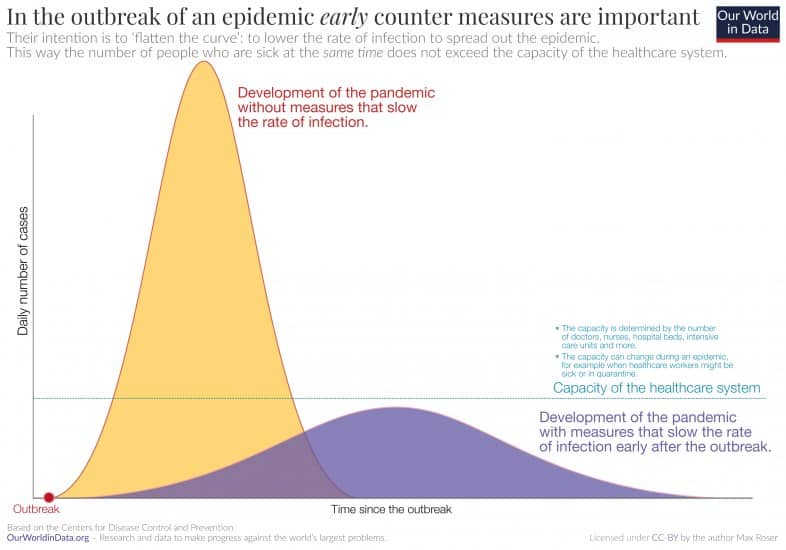Over the weekend I spent some time studying and speaking with both health and medical professionals, as well as reading dozens of articles from Government agencies. As I scroll through social media, literally 80% of the posts are something to do with COVID-19.
It has been a huge outbreak globally and everyone is in panic mode. There are so many comments, expert opinions and Government releases that it is almost impossible to keep up with it all, and it is quite simply causing wide spread hysteria!
I have tried as best I could to keep my personal opinion out of what is written below, and instead use reputable sources (members from CSIRO, and medical specialists/surgeons who are briefed twice daily regarding the virus).

So what’s my understanding of Coronavirus?
- This is a novel (new) virus that has only been around since December 2019 and now continues to circulate globally
- This is not the first virus that has reached humans from animals (e.g. SARS)
- Corona = Crown. That’s how it looks under a microscope
- Symptoms of confirmed cases: Fever (89%), dry cough (68%), fatigue (38%) and mucus from the lungs (33%) are the 4 most common
- More likely to affect lower respiratory systems (lungs) and less likely to have upper respiratory symptoms like runny nose or a sore throat. Upper respiratory conditions are more likely to be common cold or flu.
- There is no known vaccine and the likelihood of a vaccine being widely accessible by the general public in the next 12 months is very slim. However, we are being told they’re currently working on one.

How dangerous is COVID-19?
- Most people could eventually contract COVID-19 (up to 80%) but will never know they had it, as they’ll likely have little to no symptoms
- It will affect those with already compromised health the most, with lower respiratory conditions and diabetes being the most common health risks
- You can be a transmitter while pre-symptomatic
- Estimated 2% fatality rate, though exact figures aren’t yet known, as the actual infection rate is very difficult to confirm at this current point in time
- In Victoria, over 5,000 tests were conducted. There were 71 confirmed cases, or 1 in every 100,000 people (as of 16/3/2020)
- In Australia, there were 353 confirmed cases and 5 deaths
- In Victoria there were 71 confirmed cases with 0 deaths
- Confirmed deaths worldwide from COVID-19 as of 17/3/2020 are 7,119 (over 900,000 tests done, 182,029 confirmed cases) , 77,981 recovered.
- In perspective, CVD caused 17,300,000 deaths in 2017

Why do we need to be so careful?
- With no symptoms, you can still be a carrier and unintentionally pass it on to vulnerable people
- Common flu can give you similar symptoms
- Population panic (like the mask, toilet paper and rice/pasta craze) can cause more harm than good (heightened anxiety and worry)
- The health care system is already close to capacity and COVID-19 could push it well over
- Communities need to work together to slow down the ‘Bellcurve’ – if everyone gets affected at the same time, not as many can have critical access to the health care they require
- Those with pre-existing conditions can suffer from others carelessness

How is it transmitted?
- The virus can be spread via droplets which can remain airborne for 3 hours and up to 3 days on a surface (if given the perfect conditions, usually it is a lot less than that)
- Touching an infected surface and then touching your face, eyes, nose or mouth without properly washing and disinfecting hands first
- 15 minutes of direct exposure (close proximity) to someone with the virus is enough to transmit it. Avoid the previously mentioned, and keep an arms length distance from people (no high fives, hugs, hand shakes etc.)
- If you have symptoms, do not go out in public. Call your GP. Avoid public transport to the clinic and wear a surgical mask. Wash your hands well and avoid direct contact with people. Your GP clinic will refer you on to a pathology clinic.
How can we slow down the spread?
- Avoid touching your face, hugging, handshaking and covering coughs/sneezes will help curb the spread
- Alcohol wipes (ethanol) , hand sanitisers (over 70% ethanol), surface sprays (Glen20), bleach and methylated spirits can act to kill the virus on surfaces
- Washing your hands throughly with soap and warm water for over 20 seconds (ensuring you are rubbing soap into hands properly)
- Face masks do not stop you from contracting COVID-19. There is little-to-no benefit for you to wear a face mask out in public. If infected, it may prevent you from giving it to someone else. By hoarding masks unnecessarily you are keeping them from those that need it most (i.e. people in the medical fraternity) – Source: Spotify Podcast – Corona Virus: Fact vs Fiction
- The only masks that work to help prevent contracting viruses is the N95-Respiratory mask, which must be properly fitted
- Exercise and sunlight are critical for healthy immune systems. We can minimise spread by being outdoors in nature and being exposed to Vitamin D3, think of the impact on colds and flus in summer vs winter
- Be aware of where you have visited and who you have been in contact with
- Self-isolate if you show symptoms of the virus
Other issues with the COVID-19 outbreak
- Stress, isolation and panic could cause more harm than the actual virus long term
- Media outlets thrive on creating hysteria to sell stories. They’re not always right.
What to do if you’re showing symptoms?
If you have symptoms don’t go straight to your GP, call first!! Most GP’s will ask you not to come in because they currently have very limited PPE, and unless you meet the testing criteria you will not be tested or referred for testing, you will just be told to self-isolate. GP’s are now able to conduct bulk billed telehealth (phone or video) assessments in regards to COVID-19, so there is really no need to attend clinics and potentially expose more people.
You can call your local GP, the Victorian hotline number: 1800 675 389 or the National hotline number: 1800 020 080.
What could possibly happen in the future?
- A complete lock-down of society for 2-4 weeks could eventually happen, if the preliminary measures fail. Schools and public spaces/transport would all be affected
- If everyone isolates for 2-4weeks, the virus could disappear from our shores (see Italy)
- A dip in global spending (ASX is down $100 billion or 6.5%) could see Australia’s first recession in 30 years. RBA is at 0.5%, its never been put down to 0%, as this has been shown not to have worked overseas
- Small businesses and those with large debts would be the most affected, causing higher than normal closures and higher unemployment with lower spending
- We are not sure of the affect on unborn babies at the moment, however, it seems that young children are the least affected by the symptoms
- The virus could mutate. It could get better or worse, though viruses generally do not want to kill their host as then they cannot be passed on
- We could eventually have drive-through testing facilities like those set up in China, where swab tests are taken as well as temperatures and results are given within a few days
My Wrap Up of the situation
- You shouldn’t be overly concerned. The statistics show that there are worse diseases in circulation, be aware but not alarmed
- Don’t panic and don’t be selfish either. Help your community
- This virus could last weeks, months or years. Remaining calm and being conscious of your role in preventing the spread is vitally important.
- No one really knows when this will end
- There are new stats/evidence coming out daily
- The government completely shutting down the country for 2-4 weeks would probably be the most effective way to completely contain the situation at hand. If we are going to do it, let’s do it for real and not just certain parts of it!
- Positivity, gratitude and future planning at a time like this is incredibly important
Other great resources:
- https://ourworldindata.org/coronavirus
- https://www.who.int/emergencies/diseases/novel-coronavirus-2019/situation-reports
- https://medium.com/@ra.hobday/coronavirus-and-the-sun-a-lesson-from-the-1918-influenza-pandemic-509151dc8065
- https://www.health.nsw.gov.au/Infectious/diseases/Pages/coronavirus-webinar-qa.aspx#test-4
- https://www.dhhs.vic.gov.au/coronavirus-covid-19-daily-update
- http://ncov2019.live
- Spotify Podcast – Coronavirus: Fact vs Fiction
